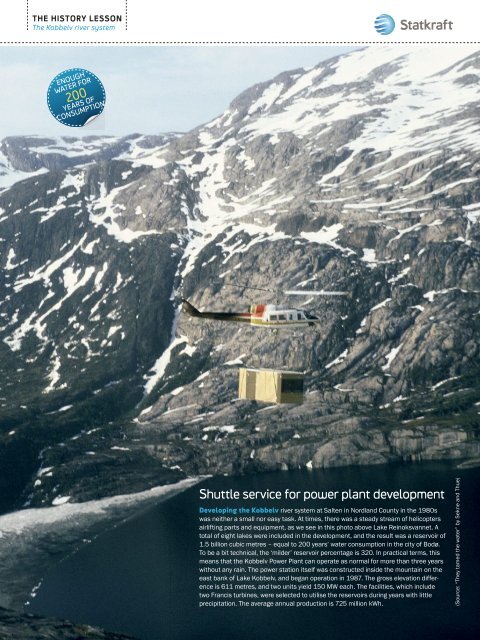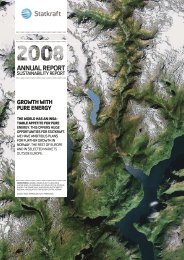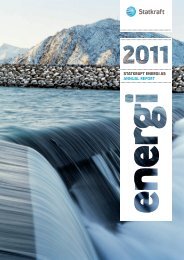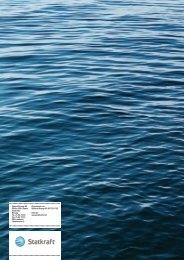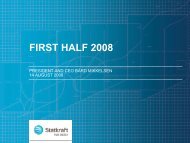CoNqueRed the StoRM - Statkraft
CoNqueRed the StoRM - Statkraft
CoNqueRed the StoRM - Statkraft
Create successful ePaper yourself
Turn your PDF publications into a flip-book with our unique Google optimized e-Paper software.
<strong>the</strong> hiStory leSSon<br />
The Kobbelv river system<br />
enough<br />
WaTer for<br />
200<br />
years of<br />
consumpTion<br />
Shuttle service for power plant development<br />
developing <strong>the</strong> kobbelv river system at Salten in Nordland County in <strong>the</strong> 1980s<br />
was nei<strong>the</strong>r a small nor easy task. At times, <strong>the</strong>re was a steady stream of helicopters<br />
airlifting parts and equipment, as we see in this photo above Lake Reinoksvannet. A<br />
total of eight lakes were included in <strong>the</strong> development, and <strong>the</strong> result was a reservoir of<br />
1.5 billion cubic metres – equal to 200 years’ water consumption in <strong>the</strong> city of Bodø.<br />
To be a bit technical, <strong>the</strong> ‘milder’ reservoir percentage is 320. In practical terms, this<br />
means that <strong>the</strong> Kobbelv Power Plant can operate as normal for more than three years<br />
without any rain. The power station itself was constructed inside <strong>the</strong> mountain on <strong>the</strong><br />
east bank of Lake Kobbelv, and began operation in 1987. The gross elevation difference<br />
is 611 metres, and two units yield 150 MW each. The facilities, which include<br />
two Francis turbines, were selected to utilise <strong>the</strong> reservoirs during years with little<br />
precipitation. The average annual production is 725 million kWh.<br />
(Source: “They tamed <strong>the</strong> water” by Sekne and Thue)<br />
40 — StAtkRAft


